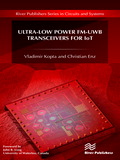Ling Zhang, †,‡,§ Hongjun Ji, †,‡,# Houbing Huang, ^ Ning Yi, ǂ,& Xiaoming Shi, ^ Senpei Xie, ‡,# Yaoyin Li, ‡,# Ziheng Ye, # Pengdong Feng, ‡,# Tiesong Lin, † Xiangli Liu, # Xuesong Leng, † Mingyu Li, †,‡,# Jiaheng Zhang, †,‡,# Xing Ma, †,‡,# Peng He, † Weiwei Zhao, †,‡,#
and Huanyu Cheng, §,ǂ
Wearable Circuits Sintered at Room Temperature Directly on The Skin Surface for Health Monitoring
ACS Appl. Mater. Interfaces 2020, 12, 40, 45504–45515
Publication Date:September 11, 2020
DOI: 10.1021/acsami.0c11479
†State Key Laboratory of Advanced Welding & Joining, Harbin Institute of Technology, Shenzhen, 518055, People’s Republic of China
‡Flexible Printed Electronics Technology Center, Harbin Institute of Technology, Shenzhen, 518055, People’s Republic of China
§Department of Engineering Science and Mechanics, The Pennsylvania State University, University Park, PA 16802, USA.
#The School of Material Science and Engineering, Harbin Institute of Technology, Shenzhen, 518055, People’s Republic of China
^Advanced Research Institute of Multidisciplinary Science, Beijing Institute of Technology, Beijing 100081, China
ǂDepartment of Materials Science and Engineering, The Pennsylvania State University, University Park, PA 16802, USA.
Abstract: A soft body area sensor network presents a promising direction in wearable devices to integrate on-body sensors for physiological signal monitoring and flexible printed circuit boards (FPCBs) for signal conditioning/readout and wireless transmission. However, its realization currently relies on various sophisticated fabrication approaches such as lithography or direct printing on a carrier substrate before attaching to the body. Here we report a universal fabrication scheme to enable printing and room-temperature sintering of metal nanoparticle on paper/fabric for FPCBs and directly on the human skin for on-body sensors with a novel sintering aid layer. Consisting of polyvinyl alcohol (PVA) paste and nanoadditives in the water, the sintering aid layer reduces the sintering temperature. Together with the significantly decreased surface roughness, it allows for the integration of a submicron-thick conductive pattern with enhanced electromechanical performance. Various on-body sensors integrated with an FPCB to detect health conditions illustrate a system-level example.

Fig: Print These Electronic Circuits Directly Onto Skin by spectrum.ieee.org
Acknowledgment: This work was supported by several grants provided by The Pennsylvania State University and National Science Foundation (NSF) (Grant No. ECCS-1933072) to H.C., as well as Shenzhen Science and Technology Program (Grant No. KQTD 20170809110344233, JCYJ 20170811160129498) and Bureau of Industry and Information Technology of Shenzhen through the Graphene Manufacturing Innovation Center (201901161514). X.L. acknowledges the support from the Natural Science Foundation of China (11672090)



 Add Event to Calendar
Add Event to Calendar 

